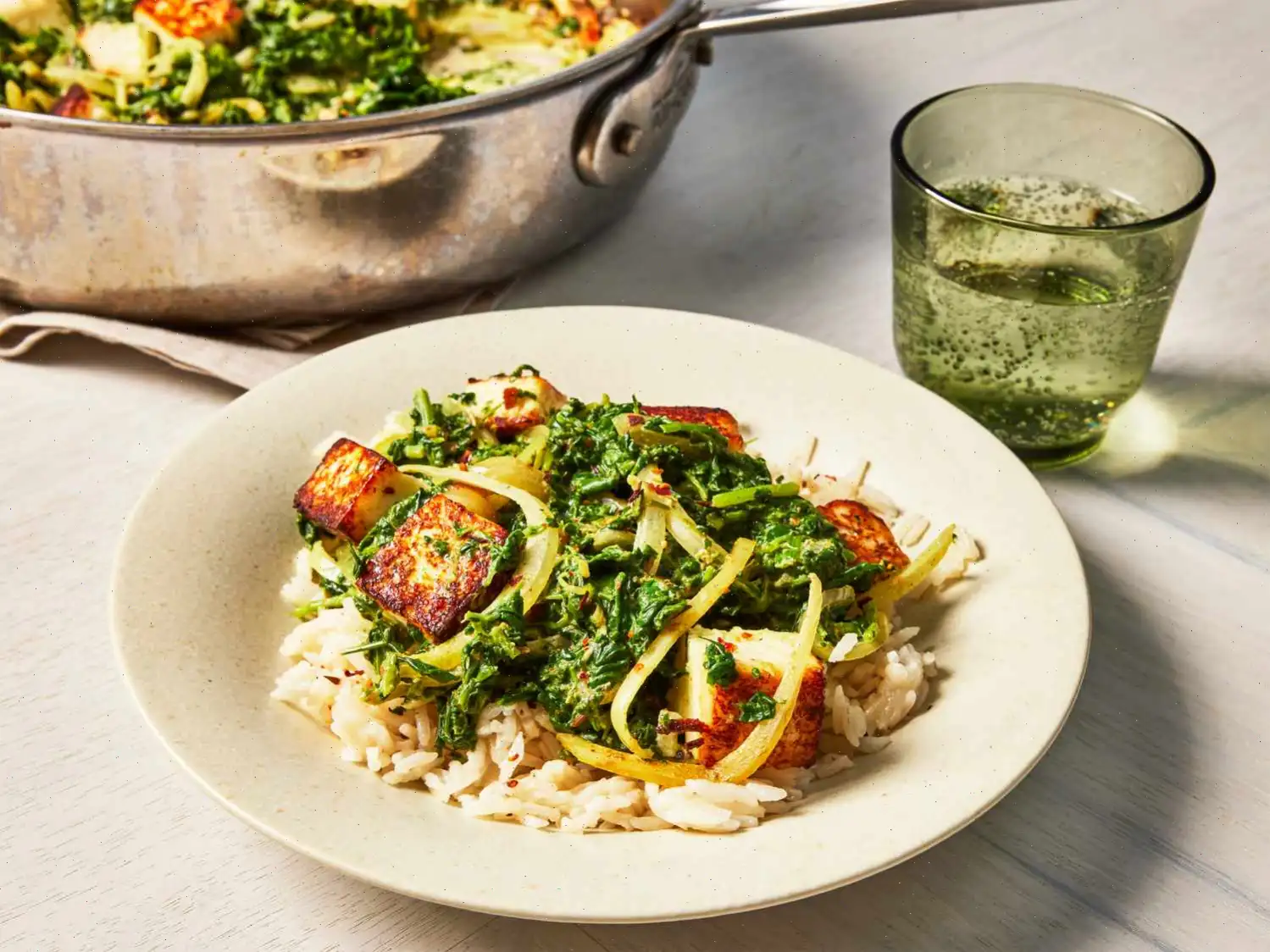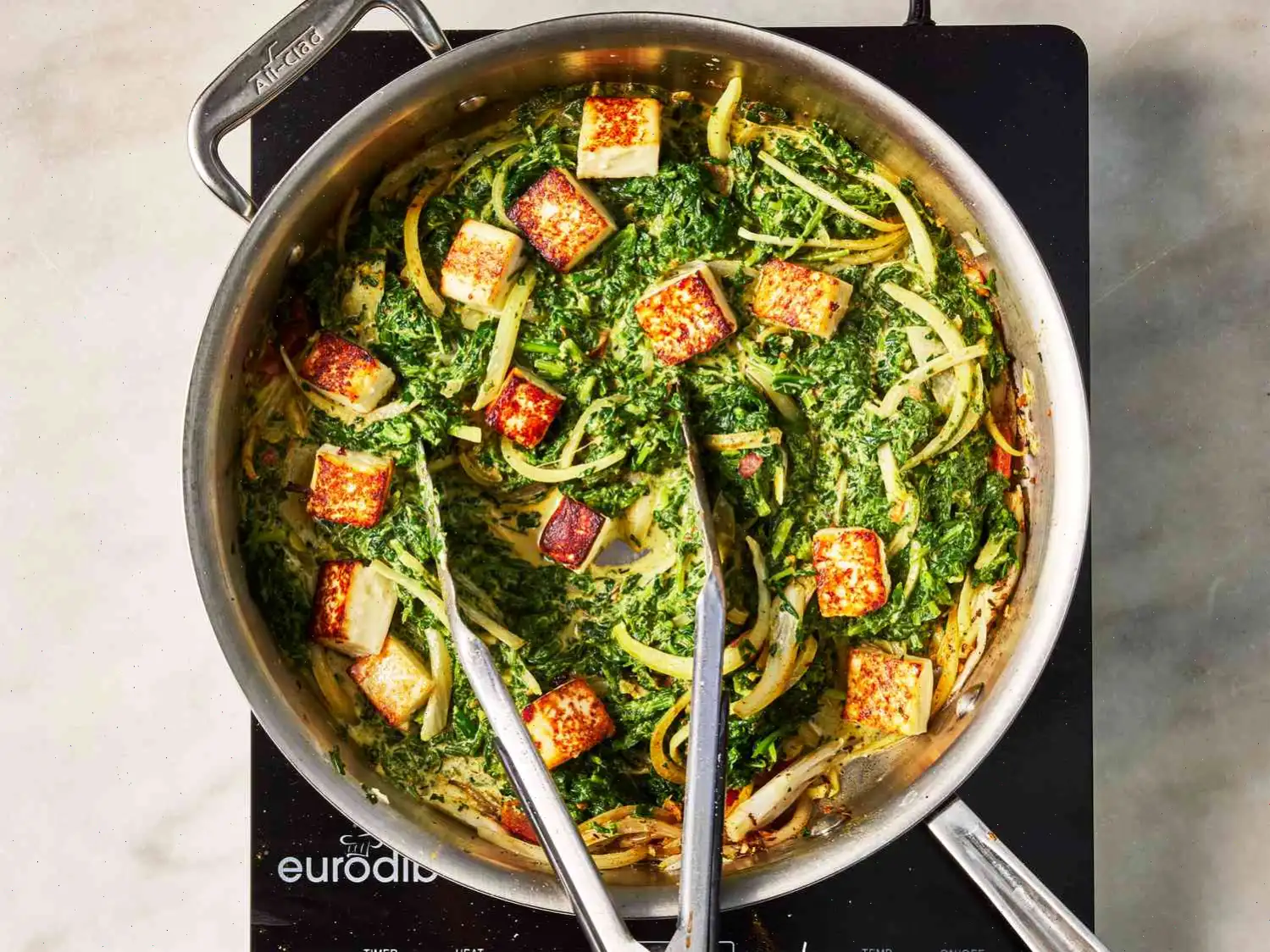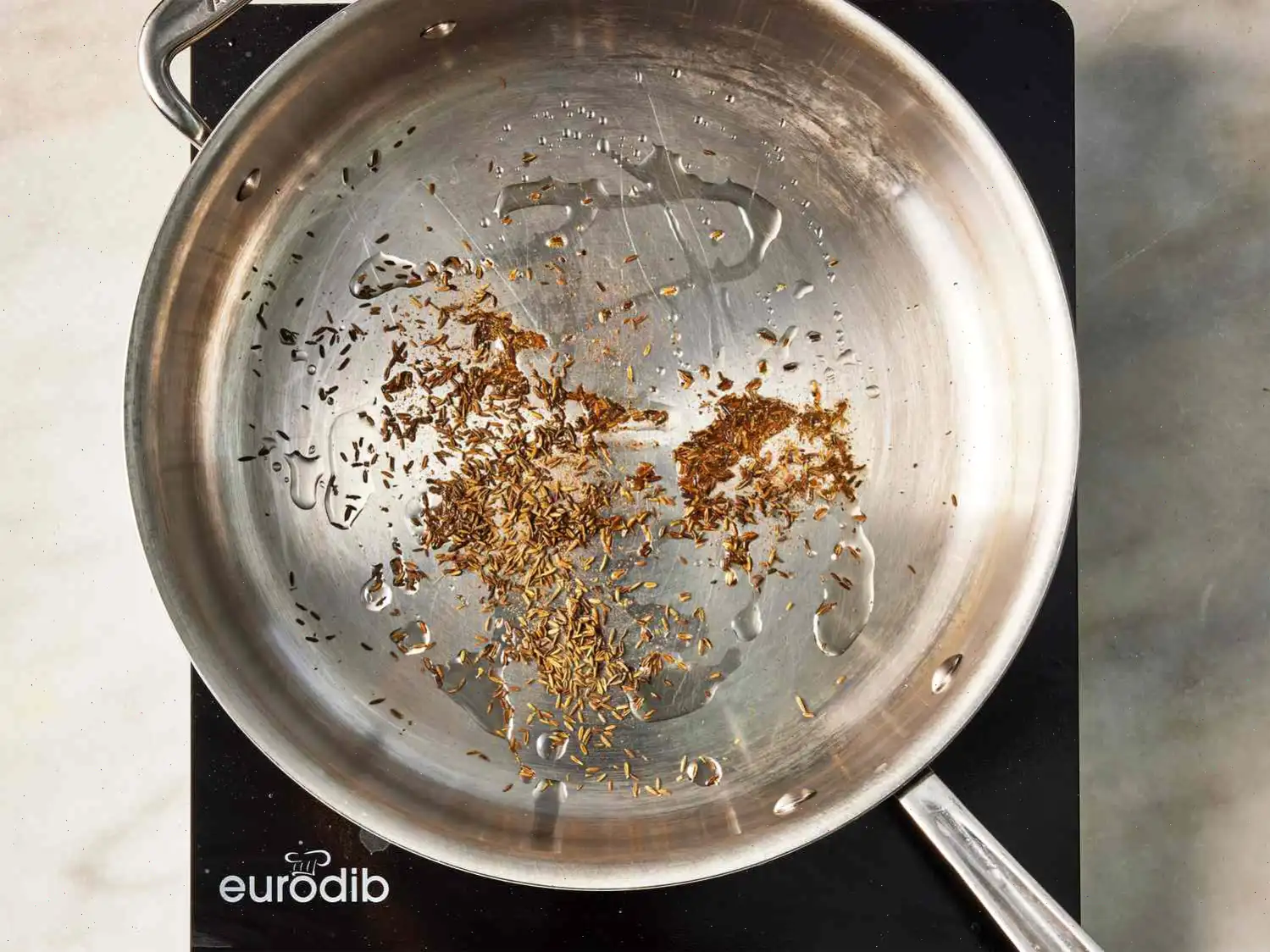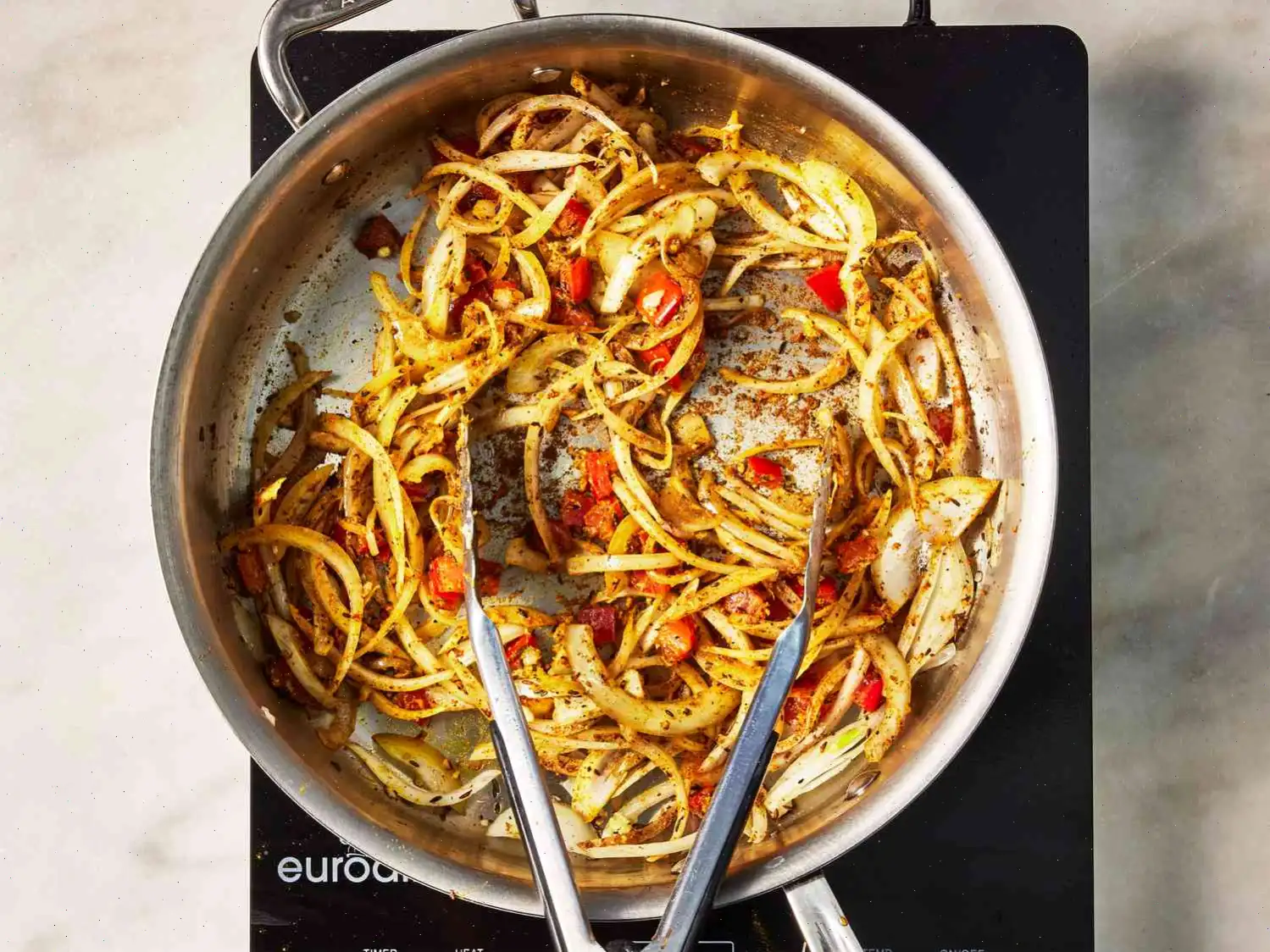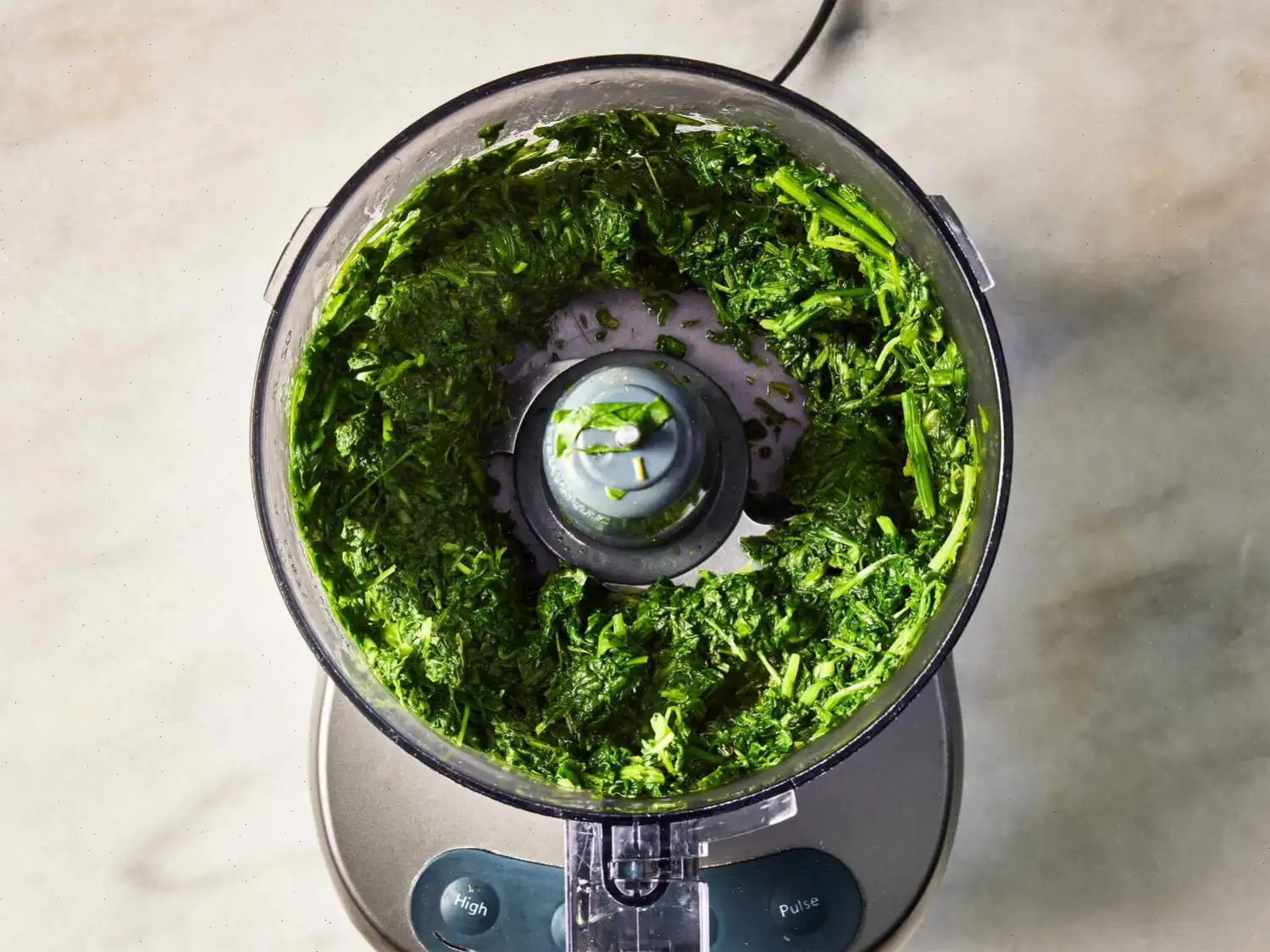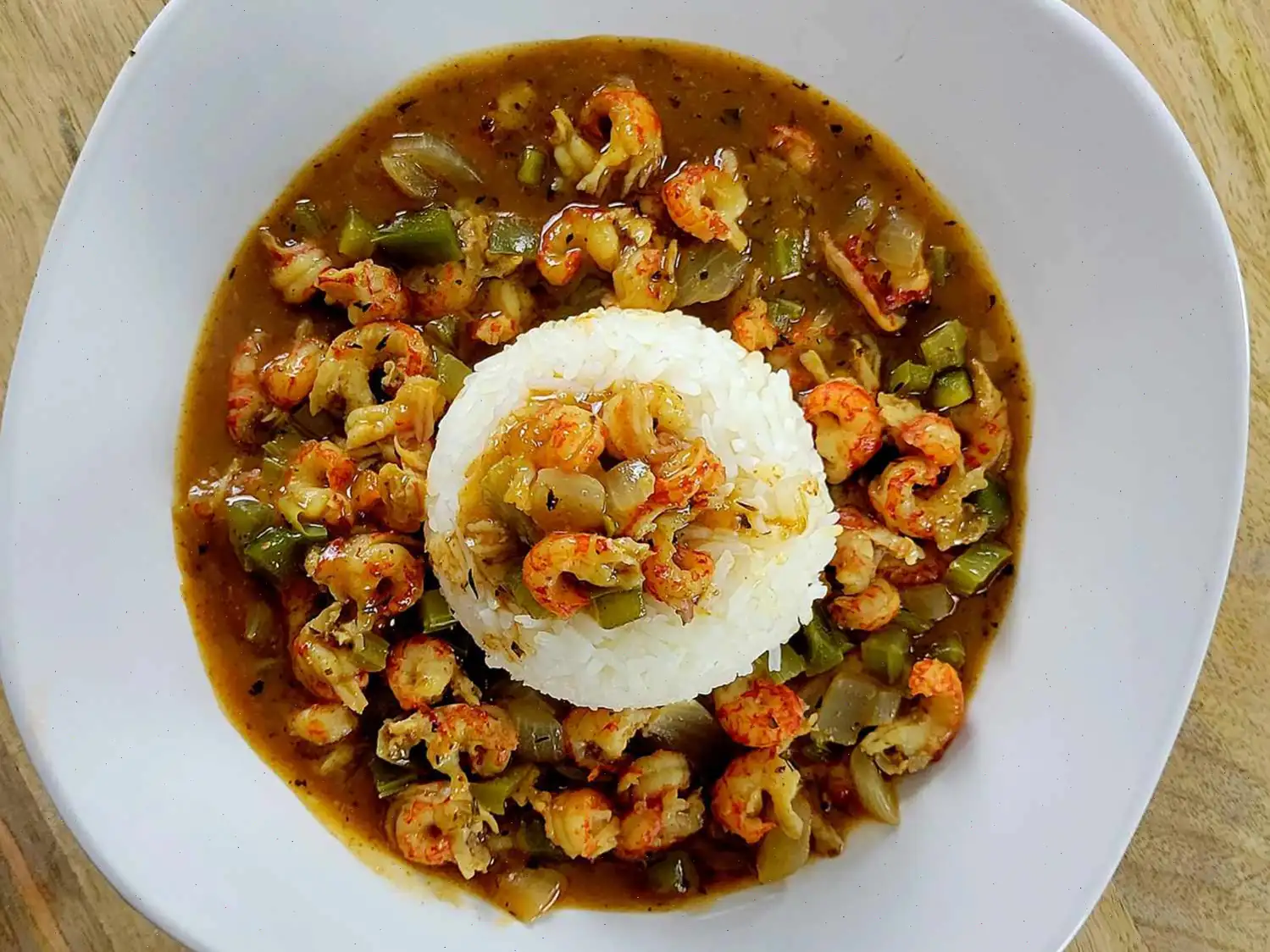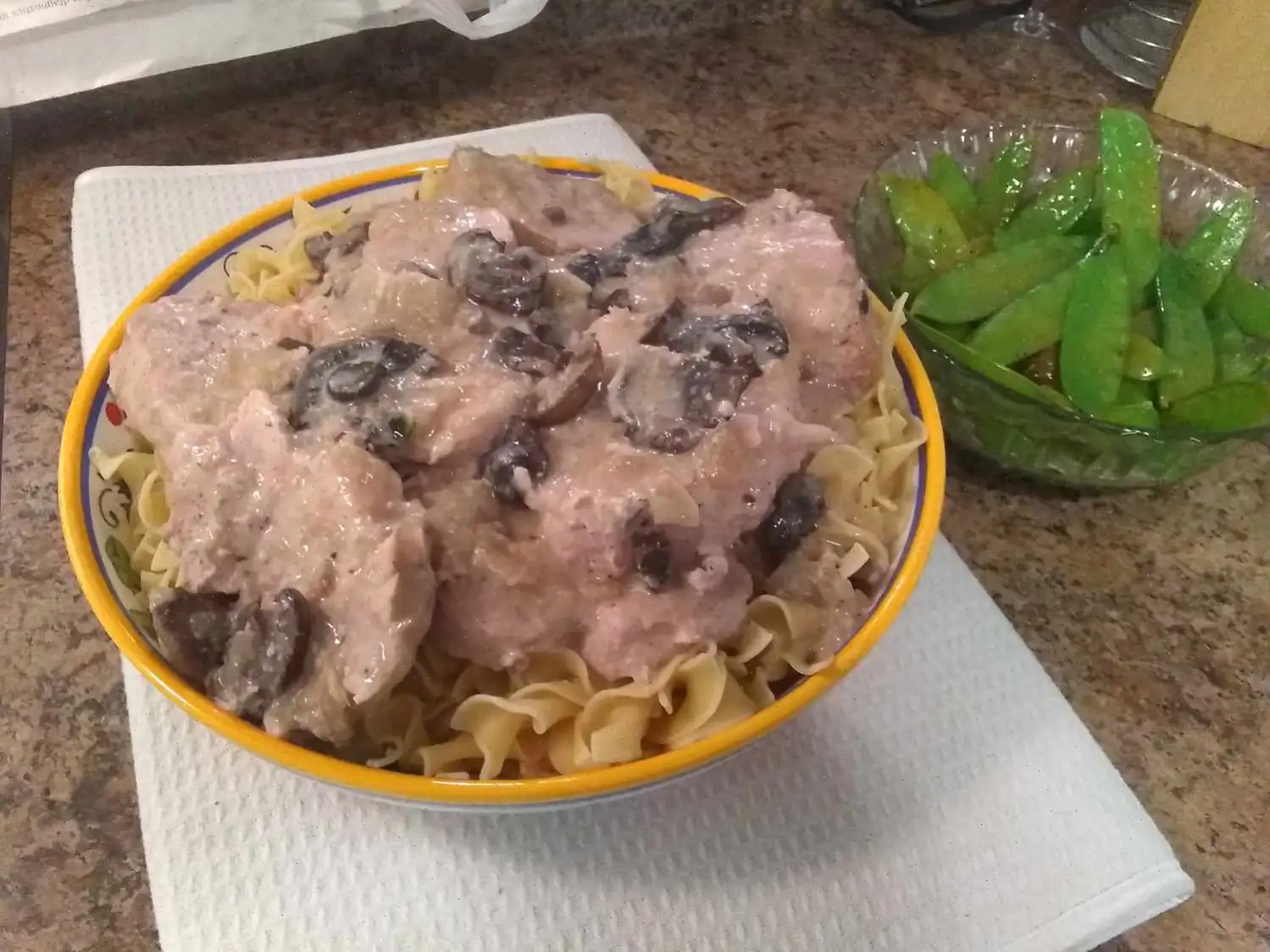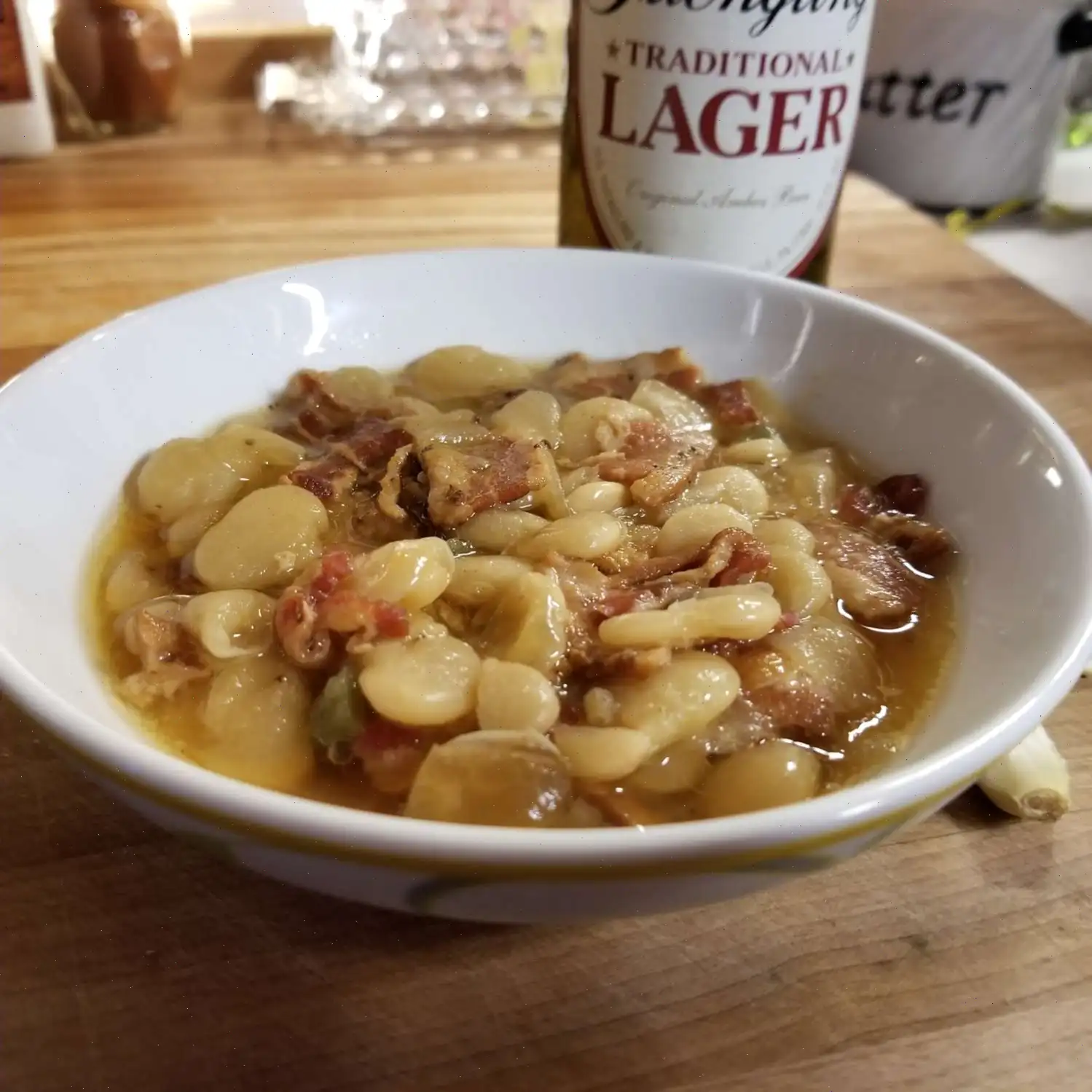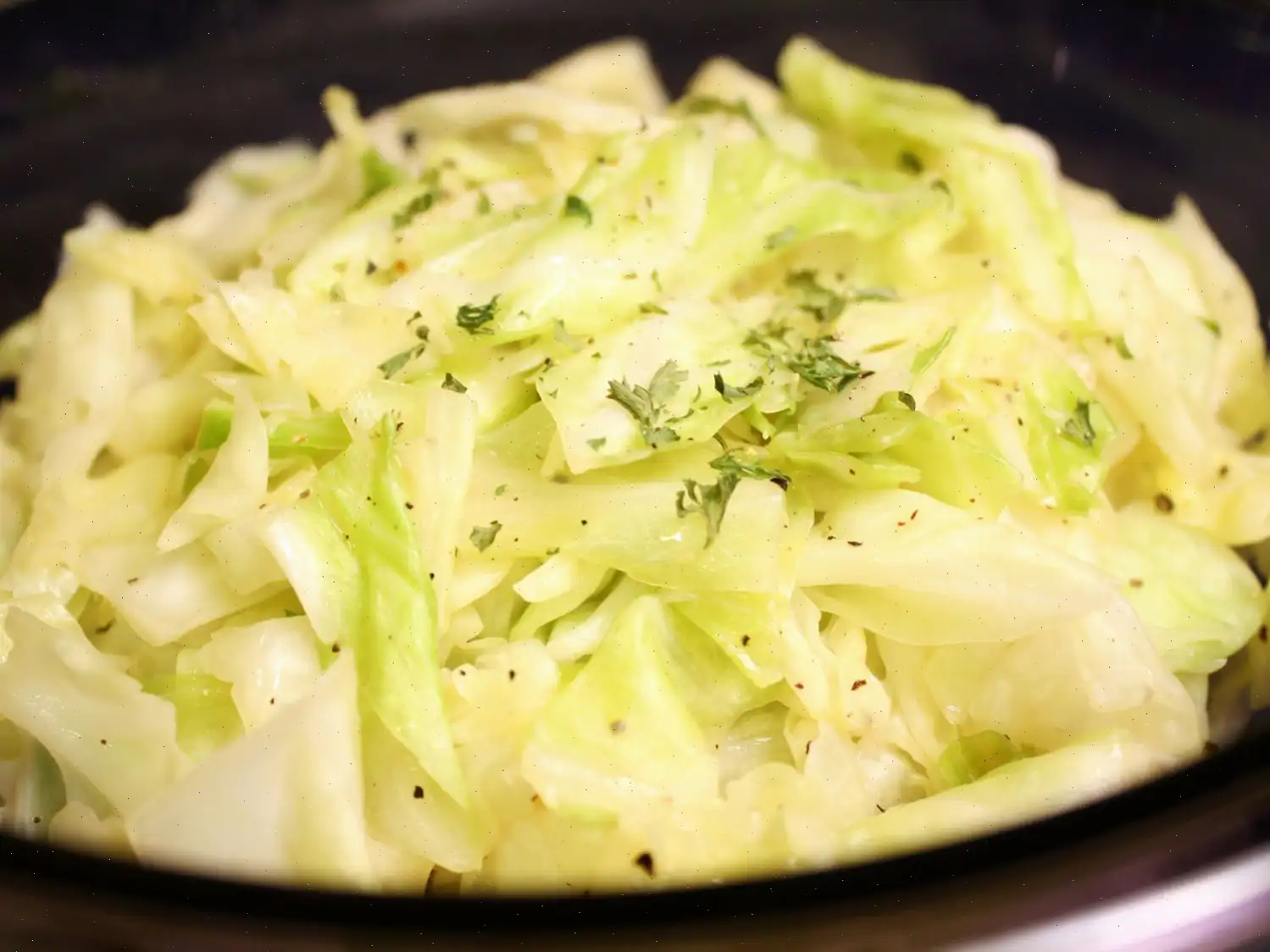
Authentic Saag Paneer Recipe
Ingredients
- 2 bunches spinach, roughly chopped
- 1 bunch fenugreek leaves, roughly chopped
- 3 tablespoons canola oil, divided
- pound paneer, cubed
- 1 teaspoon cumin seeds
- 1 onion, thinly sliced
- 3 cloves garlic, minced
- 1 teaspoon grated fresh ginger
- 1 tomato, diced
- 2 teaspoons garam masala
- teaspoon ground turmeric
- teaspoon cayenne pepper
- cup heavy whipping cream
- Salt to taste
Directions
- Gather all the ingredients for easy access while cooking.
- Bring a large saucepan of water to a boil. Add the spinach and fenugreek leaves and cook until they wilt, which should take about 3 minutes. Once wilted, drain the mixture well.
- Transfer the drained spinach and fenugreek to a food processor and blend until finely chopped. It should take about 5 pulses to achieve a smooth consistency.
- Heat 1 tablespoon of canola oil in a large skillet over medium heat. Add the cubed paneer and fry until golden brown on all sides, approximately 5 minutes. Remove the paneer and set it aside on a plate.
- In the same skillet, add the remaining 2 tablespoons of canola oil over medium heat. Add the cumin seeds and fry them for about 3 minutes until lightly toasted and fragrant.
- Add the sliced onion to the skillet and cook, stirring occasionally, until softened, about 4 to 5 minutes.
- Add the minced garlic and grated ginger to the pan and stir to coat the onions. Cook for another minute.
- Stir in the diced tomato, garam masala, ground turmeric, and cayenne pepper. Continue cooking, stirring often, until the tomato breaks down and the mixture becomes aromatic, around 10 minutes.
- Now, add the pureed spinach and fenugreek mixture, followed by the fried paneer cubes and the heavy cream. Stir everything together and season with salt to taste.
- Reduce the heat to low, cover the skillet, and let the curry simmer for 15 minutes, stirring occasionally to ensure the flavors meld together perfectly.
Recipe Tip
You can substitute coconut milk for the cream if you're looking for a dairy-free alternative.
Nutrition Facts (per serving)
- Calories: 299
- Fat: 20g
- Carbs: 18g
- Protein: 17g
- Sodium: 480mg
- Fiber: 5g
- Calcium: 366mg
- Iron: 16mg
- Potassium: 1190mg
Servings: 4
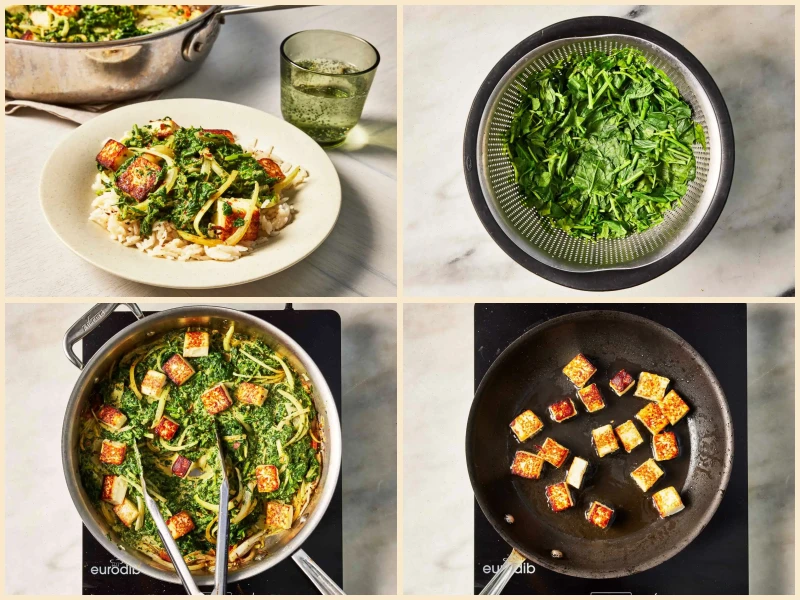
Saag Paneer is a quintessential dish from India, loved for its rich, flavorful sauce made from greens like spinach and fenugreek, paired with tender cubes of fried paneer cheese. It's a vegetarian dish that's satisfying, aromatic, and packed with nutrients. But where did this beloved dish come from, and what makes it so special across the diverse regions of India? Lets take a look at its origins, regional variations, and the unique qualities that set it apart from similar dishes.
Origin and History
Saag Paneer, like many iconic dishes of Indian cuisine, traces its origins to the northern regions of India, particularly Punjab, where it was developed as a way to use locally grown greens. The word "saag" refers to leafy greens, most often spinach, while "paneer" is a fresh, unaged cheese made from cows milk. The combination of these ingredients became a popular choice for vegetarian meals, particularly in the colder months when fresh vegetables were abundant.
Historically, this dish is also linked to the rich culinary traditions of Indian farmers, who would cook hearty, filling meals from readily available ingredients. Over time, Saag Paneer became popular across the subcontinent, not only because of its delicious taste but also due to the health benefits it provides, especially with the inclusion of fenugreek leaves, which are believed to aid in digestion and improve skin health.
Regional Variations
While Saag Paneer is enjoyed across India, the preparation and specific ingredients can vary by region. In Punjab, the dish is often made with a blend of mustard greens and spinach, giving it a slightly bitter flavor profile. In contrast, southern India might use coconut milk instead of cream, lending the dish a slightly sweeter and more tropical flavor. In the west, particularly in Gujarat and Maharashtra, variations may include the use of more spices and a variety of greens like methi (fenugreek) and bathua (pigweed).
Moreover, some people in the northern regions prefer using different types of greens like collard greens or kale, adjusting the dish according to what is available locally. The cooking technique also varieswhile some recipes call for the greens to be boiled and pureed, others incorporate them fresh, adding texture and color to the dish.
What Makes Saag Paneer Unique?
At its core, Saag Paneer stands out because of its distinctive combination of earthy, leafy greens and rich paneer. What sets it apart from other similar dishes, such as Palak Paneer (which uses spinach as the primary green), is the addition of fenugreek leaves, which add a unique, slightly bitter flavor that balances the creaminess of the sauce and the richness of the cheese. Unlike many other vegetarian curries that use a base of tomatoes and onions, Saag Paneers base is predominantly made of the greens, making it a lighter yet equally flavorful dish.
Where Is It Typically Served?
Saag Paneer is commonly served in Indian restaurants worldwide, especially in those offering traditional Punjabi cuisine. In India, it's a staple in home kitchens, often eaten with naan, roti, or rice. It is a perfect choice for a vegetarian main course or can be paired with dals (lentils) and other vegetable dishes in a traditional thali (platter). The dish is particularly popular during the winter months, when the fresh greens are in season, and its hearty, warming nature makes it a comfort food.
Interesting Facts
- Paneer Benefits: Paneer, the star ingredient of this dish, is a good source of protein and calcium, making it an excellent addition to a vegetarian diet.
- Green Power: Saag Paneer is not only tasty but also packed with nutrients from the greens. Spinach provides iron and Vitamin C, while fenugreek leaves offer digestive benefits and are high in fiber.
- Adaptability: The beauty of Saag Paneer lies in its adaptability. While traditional recipes call for fresh fenugreek leaves, modern variations use dried fenugreek leaves (kasuri methi), spinach, or a mix of greens depending on availability.
- A Meal for All Seasons: Saag Paneer is enjoyed year-round, but it is particularly comforting during the winter months when greens are in abundance.
Whether enjoyed in its authentic form or with a regional twist, Saag Paneer is a beloved dish that reflects the diversity and depth of Indian cuisine. Its combination of fresh greens and rich paneer makes it a dish that has stood the test of time and remains a favorite on menus worldwide.
FAQ about Authentic Saag Paneer Recipe
Comments
Donald Hall
07/09/2024 12:07:02 AM
I rarely give 5-star ratings, but this recipe is a winner! It may not be perfect, but it's the best saag I've ever made (and I've tried three other recipes). I don't understand the reviews saying it's bland - my husband and I love our food spicy and well-seasoned, and we were pleasantly surprised that we didn't need to add extra chili paste or hot sauce. I was generous with the spices and used coconut milk instead of cream, which worked perfectly. I ended up adding almost a whole can of coconut milk to achieve the desired consistency for 1 lb of spinach. I couldn't find fresh fenugreek, so I used dry fenugreek leaves, which added a great flavor. Making the paneer from scratch was a delicious touch. I'll definitely be making this recipe again!
David Diaz
04/06/2024 04:24:55 AM
Great basic recipe. I adapted it for the crockpot by putting around 2 pounds of frozen spinach into the pot on low heat. I simmered a can of coconut milk and a can of chicken broth with toasted spices, then poured it over the spinach. I let it simmer for several hours. I also added cubed queso fresco when serving, which made it authentic and delicious. I will definitely make this again!
Jeffrey Johnson
04/10/2025 04:23:01 AM
I will definitely be making this recipe again. Both my family and guests have commented that it tastes just as delicious as what we typically enjoy at our favorite Indian restaurant. I opt for using coconut oil for cooking. When frying the paneer, I find that using a ceramic frying pan works well as it doesn't require any additional oil. Instead of fresh spinach, I prefer using a pound of frozen chopped spinach as it's more convenient for impromptu cooking sessions. After thawing the spinach and cooking it briefly, I incorporate methi powder (fenugreek). It's crucial to be mindful during step 3 - overheating the cumin seeds or onions can ruin the dish. The mixture should be cooked for about 15 minutes to develop fully without burning, reminiscent of the care needed when making a roux. After adding the spices, I allow them to infuse for a few more minutes before mixing in canned chopped tomatoes. I heat the thawed spinach in a deep bowl in the microwave and then blend it with the tomato-spice mixture using an immersion blender. Finally, I add the paneer and cream (I use coconut milk or a combination of cream and coconut milk), and cook it further either in the microwave or on the stovetop to reach the desired consistency. Overall, this recipe is simple to make and yields fantastic results.
Cynthia Scott
06/16/2023 12:46:22 AM
Rewritten review: Living in a rural area meant I had to make some substitutions for this recipe. Instead of fenugreek, I used fresh mustard greens and some fenugreek powder. For paneer, I swapped in cubed extra-firm tofu seasoned with cumin, cayenne pepper, and cornstarch, then baked until browned. I doubled the spices (except cayenne) as recommended by others. To make it healthier, I used 2 percent plain Greek yogurt instead of whipping cream. While my changes may have strayed from the original, the dish turned out delicious. I served it with quinoa.
Janet Green
01/02/2023 10:27:04 AM
This dish was delicious! I made a few small changes. I marinated the paneer cubes in a blend of turmeric, cayenne, salt, and oil before sautéing them in a nonstick pan. Additionally, I used plain nonfat yogurt instead of cream. It turned out fantastic!
Susan Ramirez
12/12/2022 02:40:43 AM
Enhance the authenticity of your dish by using green chillies for a more genuine flavor.
Christine Phillips
05/01/2025 12:38:10 PM
As an enthusiastic fan of Indian cuisine, I have recently started experimenting with cooking my beloved dishes at home. I must say, this saag paneer recipe is absolutely fantastic - it even outshines my go-to Indian restaurant. I highly recommend trying out this recipe. The only modification I made was reducing the amount of cayenne pepper by half, as I have a young toddler at home.


